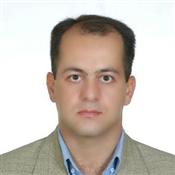Program Information
Evaluation of BEBIG HDR Co-60 After-Loading System for Skin Cancer Treatment Using Conical Surface Applicator
H Safigholi1*, A S Meigooni2 , D Han3 , A Soliman1 , W Y Song1 , (1) Department of Medical Physics, Sunnybrook Health Sciences Centre, University of Toronto, Toronto, ON, Canada (2) Department of Radiation Therapy, Comprehensive Cancer Center of Nevada, Las Vegas, NV, (3) Departemt of Radiation Oncology, University of California San Francisco, San Francisco, CA
Presentations
SU-F-T-28 (Sunday, July 31, 2016) 3:00 PM - 6:00 PM Room: Exhibit Hall
Purpose:To evaluate the possibility of utilizing the BEBIG HDR 60Co remote after-loading system for malignant skin surface treatment using Monte Carlo (MC) simulation technique.
Methods:First TG-43 parameters of BEBIG-Co-60 and Nucletron Ir-192-mHDR-V2 brachytherapy sources were simulated using MCNP6 code to benchmark the sources against the literature. Second a conical tungsten-alloy with 3-cm diameter of Planning-Target-Volume (PTV) at surface for use with a single stepping HDR source is designed. The HDR source is modeled parallel to treatment plane at the center of the conical applicator with a source surface distance (SSD) of 1.5-cm and a removable plastic end-cap with a 1-mm thickness. Third, MC calculated dose distributions from HDR Co-60 for conical surface applicator were compared with the simulated data using HDR Ir-192 source. The initial calculations were made with the same conical surface applicator (standard-applicator) dimensions as the ones used with the Ir-192 system. Fourth, the applicator wall-thickness for the Co-60 system was increased (doubled) to diminish leakage dose to levels received when using the Ir-192 system. With this geometry, percentage depth dose (PDD), and relative 2D-dose profiles in transverse/coronal planes were normalized at 3-mm prescription-depth evaluated along the central axis.
Results:PDD for Ir-192 and Co-60 were similar with standard and thick-walled applicator. 2D-relative dose distribution of Co-60, inside the standard-conical-applicator, generated higher penumbra (7.6%). For thick-walled applicator, it created smaller penumbra (<4%) compared to Ir-192 source in the standard-conical-applicator. Dose leakage outside of thick-walled applicator with Co-60 source was approximately equal (≤3%) with standard applicator using Ir-192 source.
Conclusion:Skin cancer treatment with equal quality can be performed with Co-60 source and thick-walled conical applicators instead of Ir-192 with standard applicators. These conical surface applicator must be used with a protective plastic end-cap to eliminate electron contamination and over-dosage of the skin.
Contact Email:

